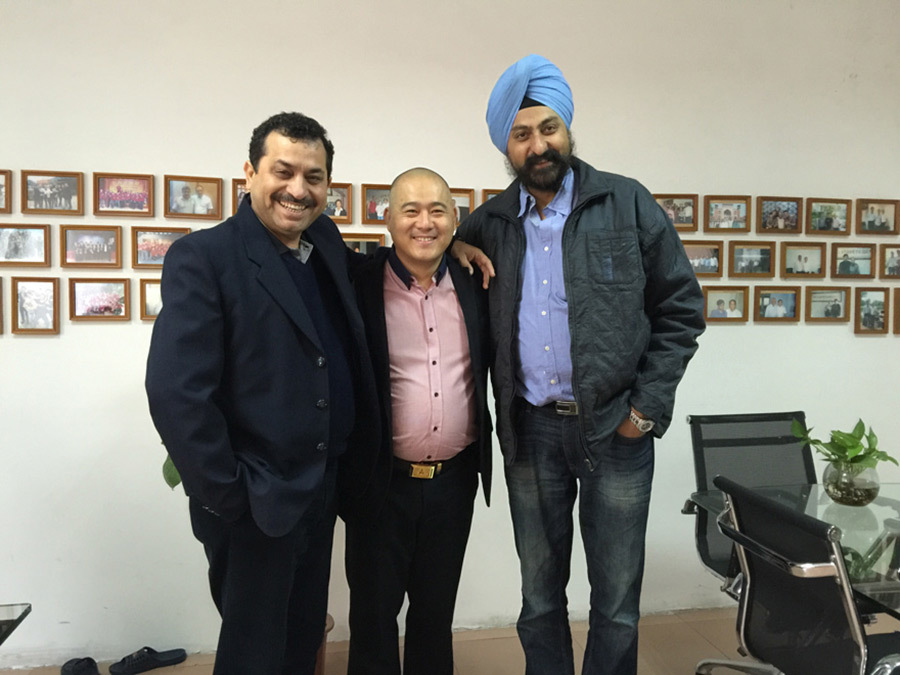Soft ferrite core structure and use
Release time: May 28,2024
We have entered the information and electronic age. The Internet and the Internet of Things that will be implemented have brought a lot of convenience and benefits to our lives. The variety of household electrical appliances continues to increase, and communication electronic products also emerge in endlessly.
In recent years, the prices of core materials and conductive materials used in electronic transformers and inductors have continued to rise, and upstream raw materials have formed a seller's market. As downstream users of power supplies, lighting appliances and electronic complete machines, they can choose and purchase globally, forming a buyer's market. The electronic transformer industry, which is in the middle, can only get rid of this dilemma by taking the road of technological innovation. However, in the more mature electronic device industry, technological innovation is more difficult. However, the improvement of every small link can bring new products and benefits.
Any technological innovation must complete specific functions under specific conditions of use and pursue the best performance-price ratio. Electronic products are generally characterized by being "light, thin, short, and small" and are developing toward miniaturization and portability. Therefore, reducing size and weight and reducing costs have become the main directions for the development of electronic devices. In order to achieve the goal, we must first understand the essential characteristics of the materials used and the environmental conditions of use. It must complete specific functions without affecting other devices.
2. Frequency range suitable for ferrite material cores
Magnetic materials are increasingly used in electrical, communications, pulse technology, microwave technology and other equipment. According to the use situation, they can be roughly divided into two types. One is at lower frequencies and high magnetic flux density. applications, such as motors and transformers. Due to the lower frequency, the resistivity can be smaller than that at higher frequencies. This type of magnetic material is mainly a metallic magnetic material. It often operates under high magnetic flux density, sometimes close to the saturation magnetization region. At this time, the nonlinearity is particularly serious, and the waveform problem is a prominent problem. The other is used at higher frequencies and low magnetic flux density, such as magnetic devices used in various electronic circuits. Due to the high frequency (104-109Hz), the material is required to have high resistivity. This type of material is mainly ferrite material, which works in the initial magnetization area in most cases. However, switching power supply transformers, choke inductors in oscillation circuits, etc. do not work in the initial magnetization area and sometimes are close to it. in the saturation magnetization region of ferrite materials.
The more standardized frequency segment division is audio (sound frequency): 20Hz-20000Hz (20kHz), high frequency: above 20kHz. In audio, 50Hz or 60Hz is called power frequency, 60Hz to 20kHz, 20Hz to 60Hz are all audio ranges, and 60Hz to 20kHz is also called intermediate frequency range. High frequency is divided into high frequency of 20-50kHz, medium and high frequency of 50-200kHz, very high frequency of 200-1MHz and ultra-high frequency above 1MHz according to the application of radio communication band. The ultra-high frequency mid-microwave band 300-3000MHz is the decimeter band, 3000-30000MHz is the centimeter wave, 30000-300000MHz is the millimeter wave, and 300000-3000000MHz is the sub-millimeter wave. According to the microwave application range on radar, it is divided into P, L, S, C, X, J, K, Q, O, V special wave bands. The commonly used microwave system with a wavelength of 3 cm has a central wavelength of 3.2 cm. The frequency is 9370MHz.
The main application frequency range of ferrite materials is above 10kHz-1GHz, which affects audio, high frequency and ultra-high frequency. Regardless of the operating frequency, the transformer transmits energy through electromagnetic induction. The amount of transmitted energy is related to the material, structure, size and operating frequency of the transformer. Electronic transformers are transformers used in electronic circuits and electronic equipment, which can be distinguished from power transformers, but also include radio frequency signal transformers with a wide frequency range. Only those with operating frequencies above 20kHz are called high-frequency electronic transformers.
3 Disadvantages of ferrite material itself
Soft magnetic ferrite is a core material widely used in electronic transformers in medium and high frequency power supplies. Compared with metal soft magnetic materials, soft magnetic ferrite has low saturation magnetic flux density, low magnetic permeability and low Curie temperature. several major shortcomings. Especially when the Curie temperature is low, the saturation magnetic flux density Bs and the power loss per unit volume Pcv will change with temperature. As the temperature rises, Bs falls, Pcv begins to fall, and then rises again after reaching the bottom. Electronic transformers in automotive electronic equipment must use high-temperature and high-Bs soft ferrites when working under high-temperature conditions with large changes in external temperature conditions and heat in the engine room. Soft magnetic composite material (SMC) is a new type of soft magnetic material developed in the 1990s. It wants to expand the operating frequency of metal materials to the MHz level and GHz level.
4 Structural shape changes of soft ferrite core
Soft ferrite cores have many structures. This is because they are sintered from powder compacts and are easier to process into various shapes. There are EI, EE, EER, EP, UF, UYF, RM, PM, PQ, Q (can shape), T (ring shape) and LP shape, etc. EI and EE shapes have formed EI10-50, EE8.3-EE110 series, with many varieties, simple and mature manufacturing process, good heat dissipation, easy wiring, and low cost. The disadvantage is that the cross-section of the middle column of the magnetic core is square, which brings trouble to coil winding. At the same time, there is no shielding and it is easy to cause stray magnetic field interference. The EER type has the EER25-54 series. The center column has a circular cross-section, which is more convenient for winding. At the same time, the winding length is 11% shorter than that of a square cross-section, thereby reducing copper loss. But still no shielding. The EP type has been formed into 7 to 30 series. The center column has a circular cross-section, and one side is shielded, and the other side has a gap to facilitate wiring. The UF type has been formed into the 9.8-25 series, which can be wound on two poles for easy wiring and good heat dissipation, but the cross-section is square and unshielded. The UYF shape has formed the 10-18 series, with two circular cross-sections, one square and one round. The RM shape has been formed into the 4-14 series, with center hole and no center hole. The center column is round, with shielding on both sides, and gaps on both sides to facilitate wiring. The PM type has the PM50-114 series, and its shielding on both sides is wider than the RM type core and has better effect. The Q-shaped (can-shaped) ones include Q7/4-Q40/29 series, which have the best shielding effect and high inductance per unit space, but the gap is small and the lead-out wiring is inconvenient. The ones with a center hole are easy to install. The PQ shape has formed the PQ20/16-PQ50/50 series. It has a larger gap than the Q shape, is more convenient for wiring, and has a large heat dissipation area on the back. It is the type with the best overall performance among the magnetic core structures for high-frequency power transformers. LP type has LP23/8-LP32/13, which is also suitable for high-frequency power transformers. T-shaped (ring-shaped), most of the cross-sections are rectangular, the magnetic circuit has no air gap, the inductance value is large, and the magnetic leakage is small.
All magnetic core structural shape designs should comply with the magnetic circuit principle, and efficiency and magnetic leakage can be determined by adjusting the cross-sectional area and magnetic circuit length. [#page#]
5 Which structural shape is best?
Their pros and cons have been detailed above, whichever shape will work best. Structurally speaking, the ring shape can minimize magnetic leakage, but in terms of sound listening (audio), the EI shape can provide a better sense of mid-frequency density. In terms of magnetic saturation alone, the EI shape is stronger than the T shape (ring shape), but the ring shape is better than the EI shape. The key is whether you can use their strengths and avoid their weaknesses to bring out their advantages. If you don’t put in enough effort or blindly save costs, it will of course become saturated easily.
The transmission energy of the transformer is closely related to the magnetic core and coil, and its transmission speed plays a decisive role in the impact of sound. Like the EI-shaped transformer, its mid-frequency is thicker and high-frequency is thinner because its transmission speed is relatively slow. And what about rings? The low frequency is relatively strong, while the mid-to-high frequency is weaker because of its fast transmission speed.
It can be seen that the air gap of the magnetic core affects the transmission speed, efficiency and frequency component ratio of energy. This reminds us of regular usage methods: high frequency, large air gap, but to prevent magnetic leakage interference; high efficiency, small air gap, but to prevent saturation. According to the operating frequency you require, balance the relationship between the two, balance the copper resistance and the iron resistance, and ensure that it does not interfere with other devices.
Related News










